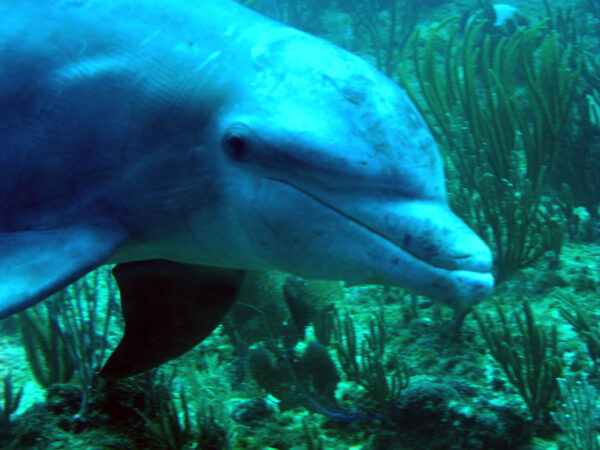Dolphins are one of the most beloved creatures in the world. They are highly intelligent, social animals that live in groups called pods. Dolphins have a unique anatomy that allows them to swim quickly and gracefully through the water. They use echolocation to find their way around and communicate with each other. Dolphins can be found in oceans worldwide, from tropical waters to cold temperate seas.
Dolphins are fascinating creatures with unique anatomy. Here are 10 facts about dolphin anatomy:
- Dolphins have ears, including middle and inner ear canals, which they use for hearing.
- Bottlenose dolphins have between 72 and 104 conical-shaped teeth.
- Dolphins swallow their prey whole and do not chew their food.
- The beak is the elongated part of the dolphin’s mouth and jaws.
- The blowhole on the top of a dolphin’s head is its nostril through which it breathes air.
- A dolphin’s skin is smooth and rubbery with no hair or sweat glands, and its outer skin layer (epidermis) is 15 to 20 times thicker than the human epidermis.
- Bottlenose dolphins are varying shades of grey with a lighter belly (counter-shading), which helps conceal them from predators.
- Dolphins have a streamlined body shape that helps them swim quickly in water, reaching speeds up to 25 miles per hour!
- Dolphins live in the world’s seas and oceans as well as some rivers, preferring different environments depending on the species of dolphin involved.
- All whales and dolphins belong to the same scientific order called Cetacea, which includes baleen and toothed whales such as dolphins!
Scientists have studied Dolphins extensively and have discovered fascinating facts about their behavior and biology. For example, dolphins can recognize themselves in mirrors, use tools to help them hunt for food, and even show signs of grief when a pod member dies. Dolphins also form strong bonds with each other and with humans, which is why they are so popular among marine mammal enthusiasts and researchers alike.
- Dolphins can recognize themselves in mirrors, a rare ability that is only seen in primates and humans.
- Dolphins use tools such as pieces of sponges to help them search for food on the seafloor.
- Dolphins show signs of grief when one of their pod members dies by carrying the body and swimming in circles around it to mourn its passing.
- Dolphins form strong bonds with each other and humans, which has endeared them to many marine mammal enthusiasts and researchers over the years.
Despite their popularity, dolphins face many threats from human activities such as fishing, pollution, and boat traffic. In recent years, conservation efforts have been put into place to protect these majestic creatures from extinction. By learning more about dolphins and taking action to protect them, we can ensure that future generations will be able to enjoy these amazing animals for years to come.
- Fishing practices can lead to unintentional captures of dolphins and other marine animals, such as turtles and sharks.
- Pollution from sources such as oil spills and other contaminants can have dire consequences for dolphins, such as death or impaired reproduction.
- Boat traffic can cause dangerous collisions between vessels and dolphins and disrupt their natural behavior pattern.


